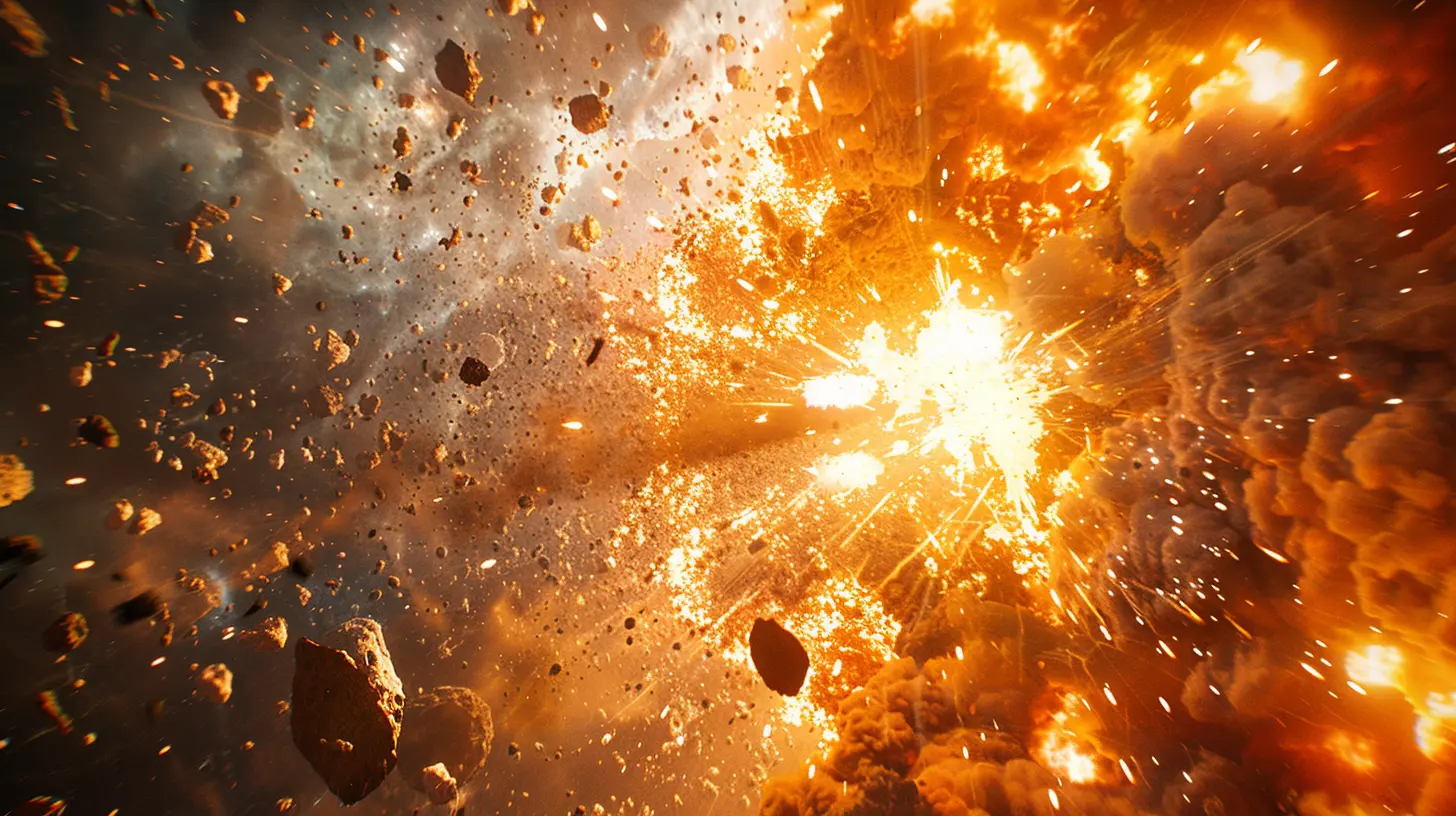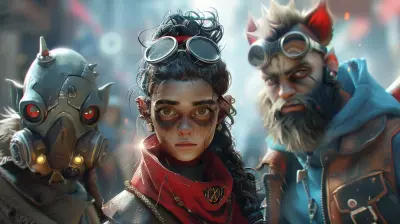The Role of Physics Engines in Game Design
18 July 2025
Have you ever wondered how video games make objects feel so real? Like when a ball bounces perfectly off a wall or when a car skids around a corner and sends debris flying? That’s where physics engines come into play. They’re the unsung heroes of modern gaming, quietly working behind the scenes to make virtual worlds behave like the real world. Let’s dive into the fascinating role physics engines play in game design and why they’re so important.
What Is a Physics Engine?
Alright, let’s start with the basics. A physics engine is essentially a piece of software in a video game that simulates physical systems. Think gravity, collision detection, momentum, and all the other good stuff that makes objects in a game world move and interact realistically. It’s like the laws of physics, but written in code.Without physics engines, game worlds would feel flat and robotic. Imagine playing a racing game where the cars don’t tilt when turning or a shooting game where grenades don’t explode in a believable way. It would feel... off, right? That’s because our brains are wired to recognize how objects should behave in the real world. Physics engines help replicate that behavior in games.
Why Are Physics Engines So Important in Game Design?
Game design is all about immersion. It’s about creating a world that feels alive, even if it’s filled with aliens, dragons, or post-apocalyptic chaos. Physics engines play a huge role in making that happen. Here’s how:1. Realism in Gameplay
First off, physics engines add a layer of realism that’s hard to achieve otherwise. Whether it’s water rippling after you throw a stone or a character’s hair flowing in the wind, these little touches make a game feel real.Think about games like Half-Life 2, which was groundbreaking for its use of the Havok physics engine. Players could interact with objects in ways that felt natural—like stacking crates or using a seesaw as a makeshift bridge. The physics weren’t just for show; they were an integral part of the gameplay.
2. Dynamic Environments
Ever played a game where walls crumble under heavy fire, or trees sway as bullets whiz past? That’s physics engines at work. They enable dynamic environments where objects can react to player actions.Games such as Battlefield and Red Dead Redemption 2 are masters at this. In Battlefield, entire buildings can collapse realistically during combat, changing the landscape and forcing players to adapt. It’s like a big domino effect, where every little action triggers a reaction.
3. Enhanced Player Experience
Let’s be real: Nobody wants to play a game where objects clip through walls or float awkwardly in mid-air. Physics engines ensure that everything in a game world behaves as it should, keeping players immersed.Take The Legend of Zelda: Breath of the Wild, for instance. The game’s physics system lets players experiment in creative ways—whether it’s using bombs to launch themselves into the air or setting grass on fire to create updrafts. It’s all about giving players the tools to interact with the game world in a believable way.
4. Emergent Gameplay
Physics engines can lead to moments of emergent gameplay—those unscripted, unpredictable events that players love. For instance, in a strategy game, a chain reaction of explosions might destroy an enemy base in a way you didn’t anticipate. Or in a sandbox game, you might accidentally send a character flying into the sky because of a poorly placed catapult.These moments not only make games more fun but also add replayability. Players will often go back just to mess around with the game’s physics and see what happens.
Key Components of a Physics Engine
Alright, so now that we know why physics engines are crucial, let’s break down what makes them tick. Here are the key components:1. Collision Detection
This is the bread and butter of any physics engine. Collision detection ensures that objects don’t pass through each other—because let’s face it, nothing ruins immersion faster than watching a car drive through a wall like it’s made of air.There are two types of collision detection:
- Broad-phase: Quickly identifies potential collisions between objects.
- Narrow-phase: Precisely calculates the exact points of contact.
2. Rigid Body Dynamics
This handles how solid objects move and interact. For example, when you knock over a stack of boxes in a game, rigid body dynamics determine how they fall, tumble, and settle.3. Soft Body Dynamics
Not everything in a game is solid. Things like cloth, jelly, or even characters’ skin require soft body physics. This system calculates how flexible or squishy objects behave when forces are applied.4. Constraints and Joints
These are rules that dictate how objects are connected. For instance, the wheels on a car are attached to the body via joints, allowing the car to steer, accelerate, and brake naturally.5. Fluid Dynamics
This one’s pretty advanced. Fluid dynamics simulate liquids like water, oil, or even lava. It’s not easy to make water look and flow realistically, but when done right, it’s a game-changer. Think of how incredible the water looks in Sea of Thieves—that’s top-tier fluid simulation.
Popular Physics Engines in Game Development
There’s no one-size-fits-all solution when it comes to physics engines. Developers often choose an engine based on their game’s needs. Here are some of the heavy hitters you’ve probably heard of:1. Havok
If you’ve played a AAA game in the last 20 years, chances are Havok was involved. It’s one of the most widely used physics engines, powering games like Halo, Skyrim, and Assassin’s Creed. Havok is known for its robust rigid body dynamics and collision detection.2. PhysX
Developed by NVIDIA, PhysX is all about real-time physics. It’s used in games like Borderlands and Batman: Arkham City. If you’ve ever seen particles flying everywhere during an explosion, that might be PhysX doing its thing.3. Bullet Physics
This open-source physics engine is popular for its flexibility. It’s used in everything from indie games to Hollywood CGI. Grand Theft Auto V leverages Bullet Physics for its vehicle dynamics.4. Unity’s Built-In Physics
Unity, one of the most popular game engines around, has its own physics system based on NVIDIA’s PhysX. It’s perfect for indie developers who want a plug-and-play solution.5. Unreal Engine’s Chaos Physics
Unreal Engine 5 features Chaos Physics, which offers unparalleled realism. It powers everything from destruction animations to cloth simulation, making it ideal for cinematic games.Challenges in Implementing Physics Engines
While physics engines are amazing, they’re not without challenges. Developers often have to balance realism with performance. After all, simulating real-world physics in real time can be taxing on a computer’s resources.1. Performance Issues
Realistic physics can be a CPU hog. This is why some games compromise on accuracy to maintain smooth frame rates. For instance, not every object in a game world is fully simulated—some are just static props to save on computational power.2. Buggy Interactions
Anyone who’s played a physics-heavy game has likely encountered some funny (or frustrating) glitches. Characters getting stuck in walls, objects flying off randomly... you name it. These bugs happen because simulating physics in a virtual world is inherently complex.3. Overcomplication
Sometimes, developers get carried away and make the physics too detailed, which can overwhelm players. Imagine a game where you have to worry about the exact air pressure in your car tires—it’s realistic, sure, but it’s also a bit much for most players.The Future of Physics Engines
So, what’s next for physics engines? As technology evolves, so do the possibilities. We’re already seeing advancements like real-time ray tracing, which makes lighting and reflections look more natural. Combine that with improved physics, and we’re looking at game worlds that are almost indistinguishable from reality.Virtual reality (VR) is another area where physics engines shine. In VR, players need to feel like they’re actually there, and realistic physics are a huge part of that. Imagine reaching out to pick up an object and having it behave exactly as it would in real life—that’s where we’re headed.
Wrapping It Up
Physics engines are the backbone of modern game design. They’re what make game worlds feel alive, interactive, and believable. Whether it’s the way a character’s hair moves or the way a car crashes, physics engines are behind it all. So, the next time you’re playing your favorite game, take a moment to appreciate the invisible magic that makes it all possible.all images in this post were generated using AI tools
Category:
Video Game DesignAuthor:

Francesca West
Discussion
rate this article
1 comments
Henrietta Duke
Great article! Physics engines are crucial in creating immersive gameplay experiences, allowing for realistic interactions and environments. By simulating real-world physics, developers can enhance player engagement and creativity. It’s fascinating to see how these technologies continue to evolve and shape the future of game design!
July 31, 2025 at 4:32 AM

Francesca West
Thank you for your insight! I’m glad you enjoyed the article and appreciate the importance of physics engines in enhancing gameplay experiences.


